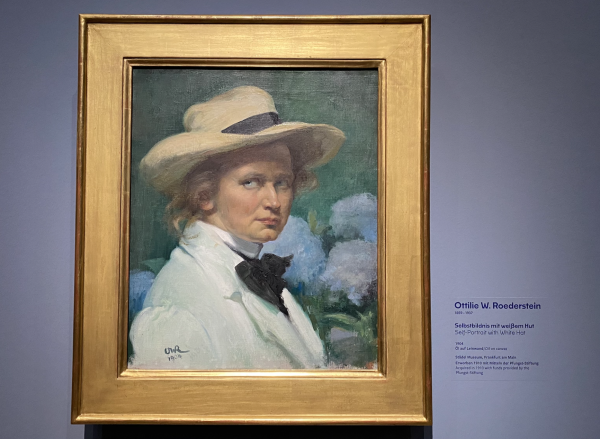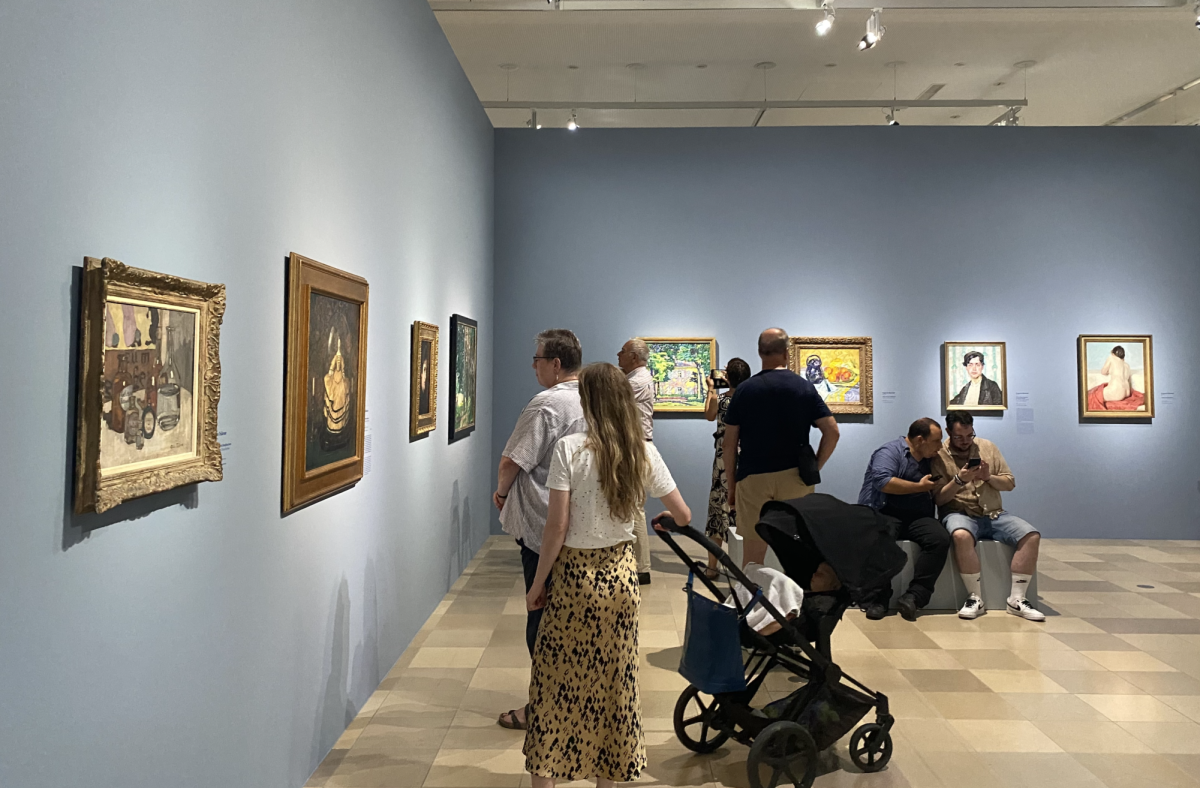As you venture into the exhibition hall, a pigeon-blue wall ornamented with black-and-white portraits of modern art heroines greet you welcomingly, beckoning you to come look closer. These twenty-six black-and-white portraits of female artists, each complemented with a short biography of their achievements, are just a mere introduction to the catalysts of Modernism as we know it today.
The Frankfurt Städel Museum’s newest exhibition, ‘Women Artists between Frankfurt and Paris around 1900’, features the many iconic contributions of women sculptors and painters like Erna Auerbach, Eugenie Bandell, Mathilde Battenberg, Ottilie Roederstein, Marie Bertuch, Ida Gerhardi, Dora Hitz, Annie Stebler-Hopf, Elizabeth Nourse, and Louise Schmidt, and many more.
The exhibition, available from 10th July to 27th October 2024, sheds a light on the oppressed female artists battling in the oppressive patriarchal art-world of the late 1800s to the early 1900s. Women seeking to take up the artist’s profession faced formidable challenges – it was not until 1919 that German state academies admitted women for art studies. To obtain a well-grounded education despite these circumstances, aspiring women painters and sculptors had to look for alternatives.
Despite their varying art styles, these brave, divisive artists all sought to challenge traditional gender roles by portraying themselves within their female-centric circles and networks.
Made up of around 80 works, this one-of-a-kind exhibition is divided into five main sections. Each of these explore a different way in which the artists asserted themselves into the industry with great professionalism and dignity. These sections are titled: ‘Women artists’ networks in Paris’, ‘The study of anatomy’, ‘Women artists at the new Frankfurt School of Arts and Crafts’, ‘Trübner’s female students’ and ‘“Feminine art”?’.
A significant portion of the exhibition is dedicated to one of the most influential role models in her time, Ottilie Roederstein. This German-Swiss artist was a pioneer for many young artists from Frankfurt to Paris and beyond. By the 1910s, she was a big name in Frankfurt, owning a spacious studio in the Städel Art Institute where she taught young female artists and supported their advancement. The most well-known are her numerous self-portraits which show her serious and almost grimly determined demeanor, as can be seen below.

As an Impressionism enthusiast, Marie Bertuch’s painting titled Im Mütterspital (In the Maternity Hospital) is a personal favorite of mine. Depicted below, the soft afternoon-like lighting is cast on the main subjects of the scene, reminiscent of a spotlight. This, paired with the setting – being in a maternity hospital – evoked in me a sense of warmth when observing the mother tenderly caring for her child.
However, the context of this work is most notable to me. Many women artists were all too often under pressure from society to limit themselves to these ‘typically feminine’ motifs – like mother-and-child depictions in their work.

In addition, Eugenie Bandell’s Bildnis eines Jünglings vor bunter Tapete (Portrait of a Youth before Colourful Wallpaper) also really stood out to me. Bandell’s unique brushstroke style, adopted during the turn of the century, was characterized by ‘block’ strokes – making her paintings look mosaic-like. The pensive, almost pitiful yet tranquil look on the subject’s face beckons observers to stay and stare for a while.








